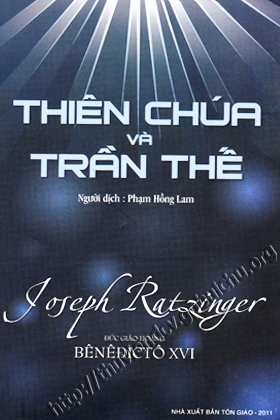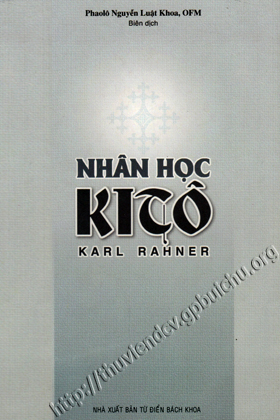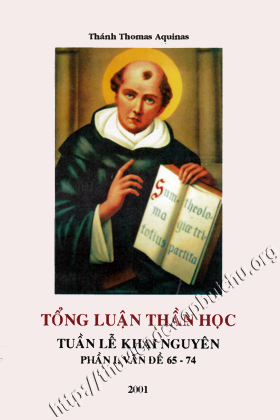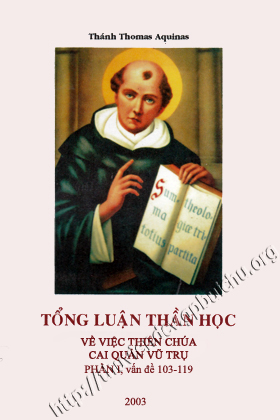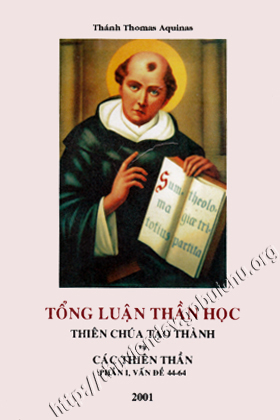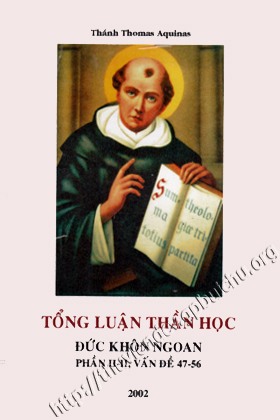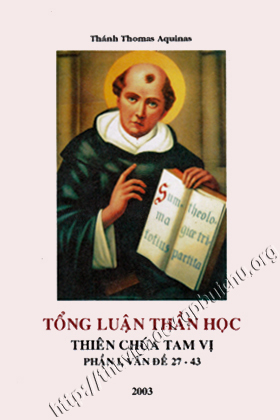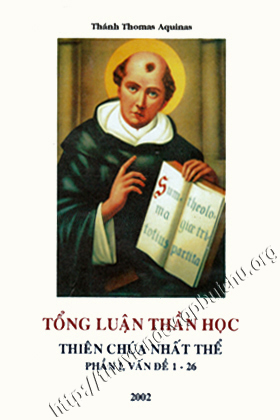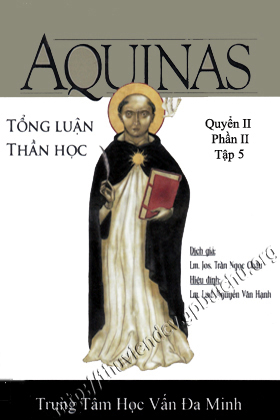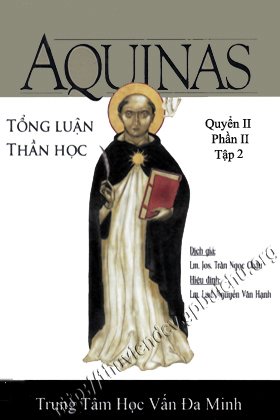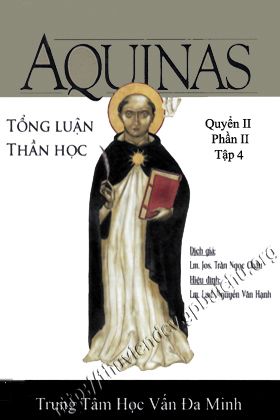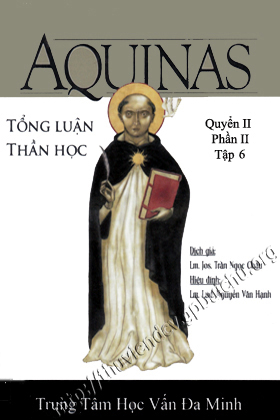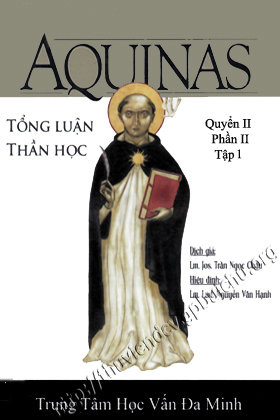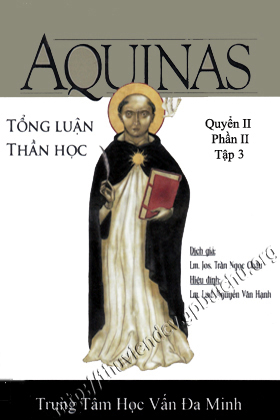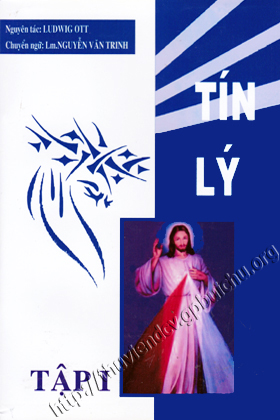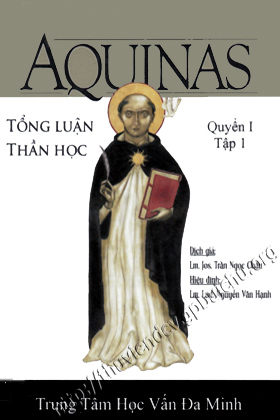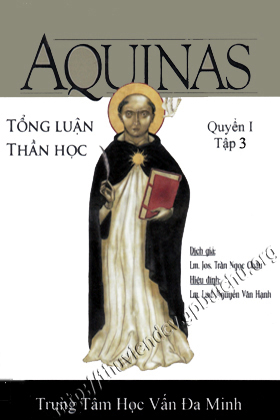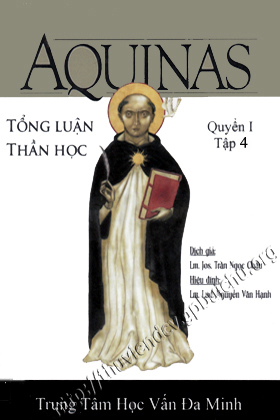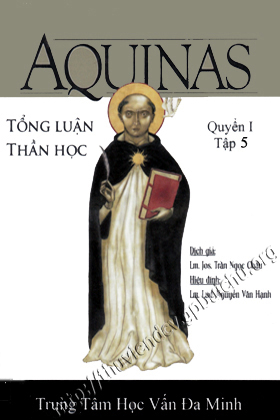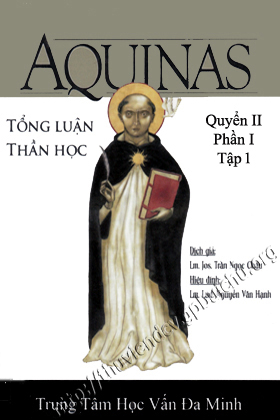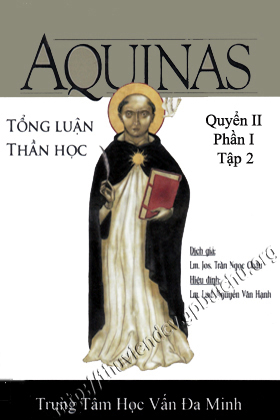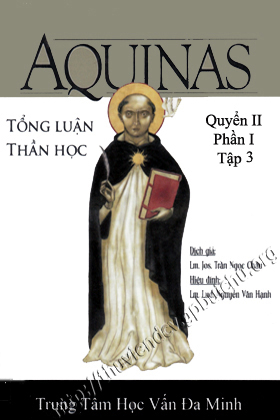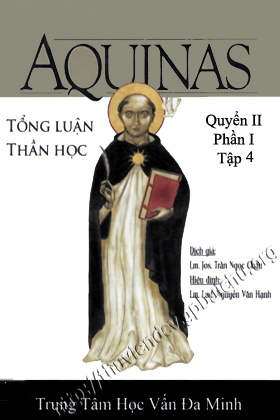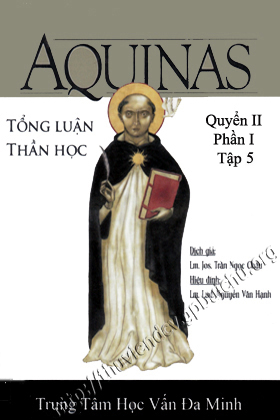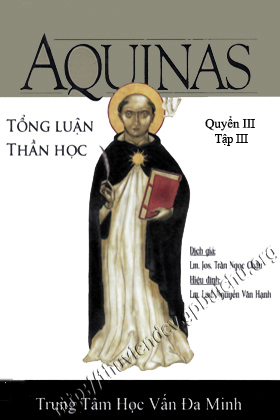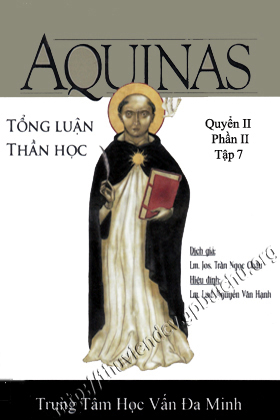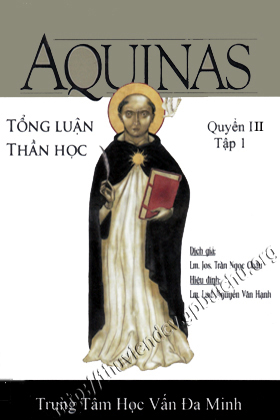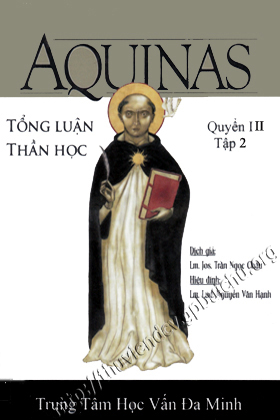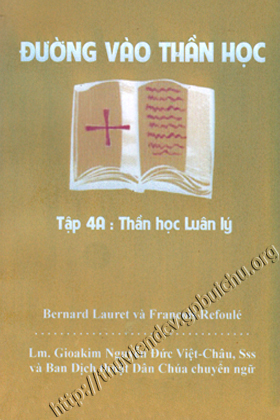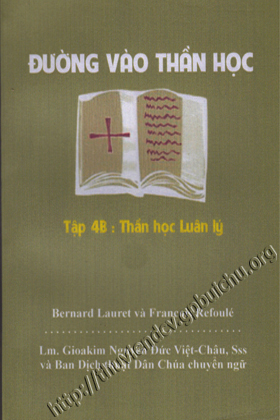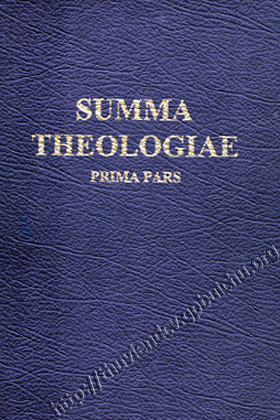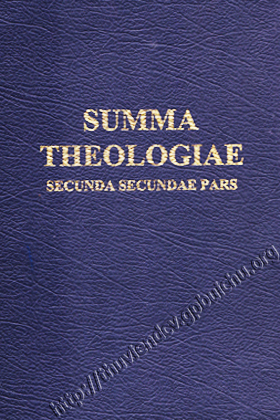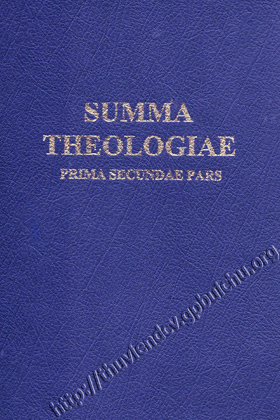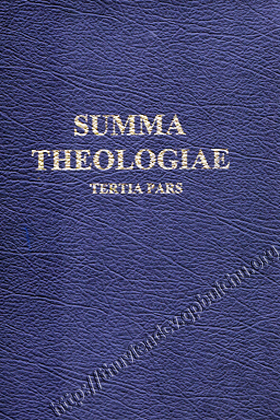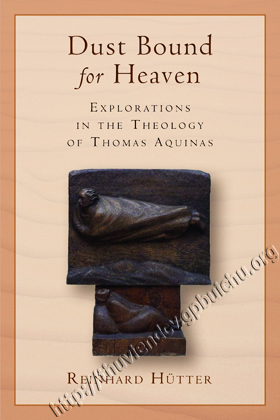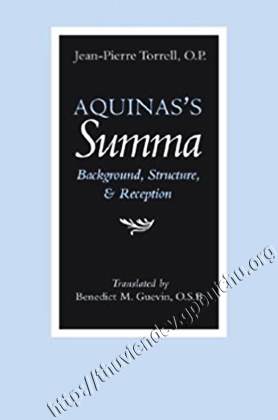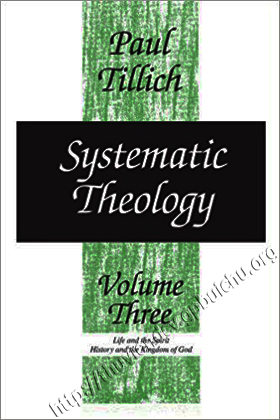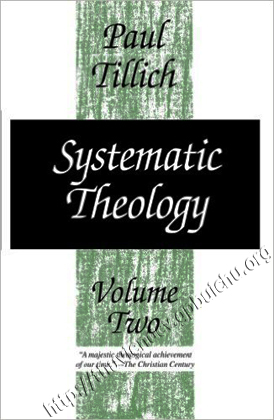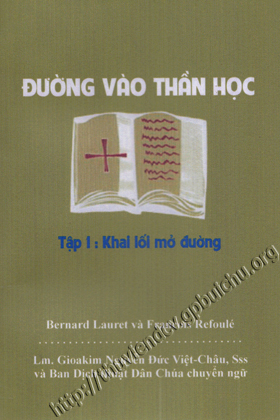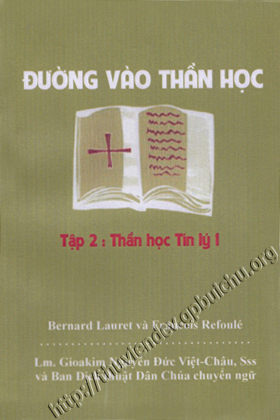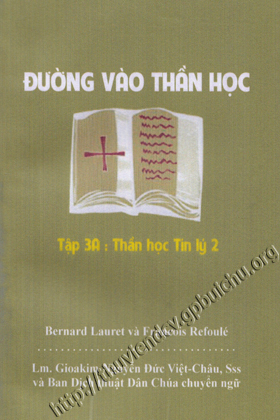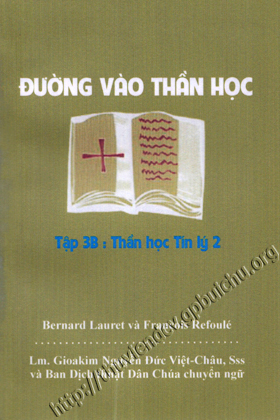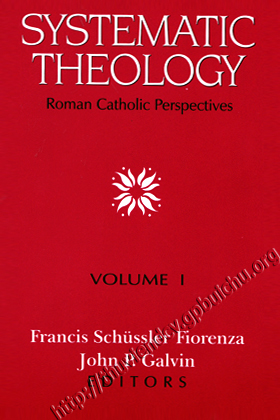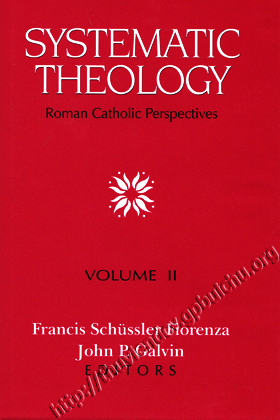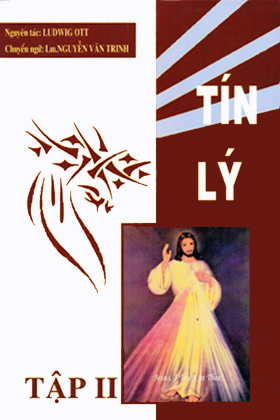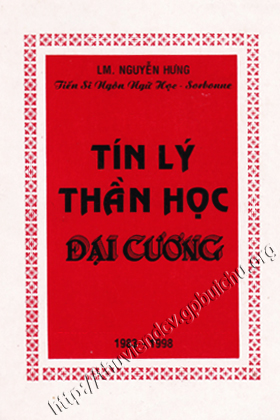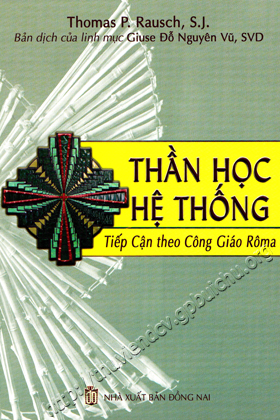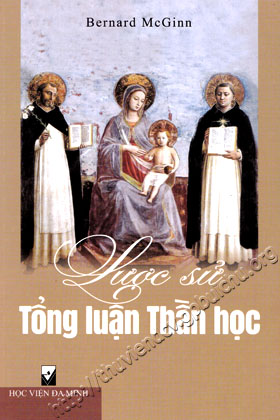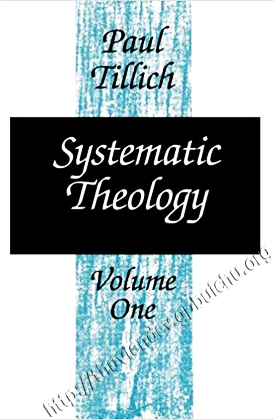
| Systematic Theology | |
| Phụ đề: | Reason and Revelation Being and God |
| Tác giả: | Paul Tillich |
| Ký hiệu tác giả: |
TI-P |
| DDC: | 230.2 - Thần học Kitô giáo |
| Ngôn ngữ: | Anh |
| Tập - số: | Vol 1 |
| Số cuốn: | 1 |
Hiện trạng các bản sách
|
||||||||||||||||
» Thêm vào danh sách tác phẩm yêu thích
| INTRODUCTION | 3 |
| A. The Point of View | 3 |
| 1. Message and Situation | 3 |
| 2. Apologetic Theology and the Kerygma | 6 |
| B. The Nature of Systematic Theology | 8 |
| 3. The Theological Circle | 8 |
| 4. Two Formal Criteria of Every Theology | 11 |
| 5. Theology and Christianity | 15 |
| 6. Theology and Philosophy: A Question | 18 |
| 7. Theology and Philosophy: An Answer | 22 |
| C. The Organization of Theology | 28 |
| D. The Method and Structure of Systematic Theology .... | 34 |
| 8. The Sources of Systematic Theology | 34 |
| 9. Experience and Systematic Theology | 40 |
| 10.The Norm of Systematic Theology | 47 |
| 11.The Rational Character of Systematic Theology ... | 53 |
| 12.The Method of Correlation | 59 |
| 13.The Theological System | 66 |
| PART I. REASON AND REVELATION | |
| I. Reason and the Quest for Revelation | 71 |
| A. The Structure of Reason | 71 |
| 1. The Two Concepts of Reason | 71 |
| 2. Subjective and Objective Reason | 75 |
| 3. The Depth of Reason | 79 |
| B. Reason in Existence | 81 |
| 4. The Finitude and the Ambiguities of Actual Reason | 81 |
| 5. The Conflict within Actual Reason and the Quest for Revelation | 83 |
| C. The Cognitive Function of Reason and the Quest for Revelation | 94 |
| 6. The Ontological Structure of Knowledge | 94 |
| 7. Cognitive Relations | 97 |
| 8. Truth and Verification | 100 |
| II. The Reality of Revelation | 106 |
| A. The Meaning of Revelation | 106 |
| 1. The Marks of Revelation | 106 |
| 2. The Mediums of Revelation | 118 |
| 3. The Dynamics of Revelation: Original and Dependent Revelation | 126 |
| 4. The Knowledge of Revelation | 129 |
| B. Actual Revelation | 132 |
| 5. Actual and Final Revelation | 132 |
| 6. The Final Revelation in Jesus as the Christ | 135 |
| 7. The History of Revelation | 137 |
| 8. Revelation and Salvation | 144 |
| C. Reason in Final Revelation | 147 |
| 9. Final Revelation Overcoming the Conflict between Autonomy and Heteronomy | 147 |
| 10. Final Revelation Overcoming the Conflict between Absolutism and Relativism | 150 |
| 11. inal Revelation Overcoming the Conflict between Formalism and Emotionalism | 153 |
| PART II. BEING AND GOD | |
| I. Being and the Question of God | 163 |
| Introduction: The Question of Being | 163 |
| A. The Basic Ontological Structure: Self and World .... | 168 |
| 1. Man, Self, and World | 168 |
| 2. The Logical and the Ontological Object | 171 |
| B. The Ontological Elements | 174 |
| 3. Individualization and Participation | 174 |
| 4. Dynamics and Form | 178 |
| 5. Freedom and Destiny | 182 |
| C. Being and Finitude | 186 |
| 6. Being and Nonbeing | 186 |
| 7. The Finite and the Infinite | 189 |
| 8. Finitude and the Categories | 192 |
| 9. Finitude and the Ontological Elements | 198 |
| 10.Essential and Existential Being | 202 |
| D. Human Finitude and the Question of God | 204 |
| 11.The Possibility of the Question of God and the So-called Ontological Argument | 204 |
| 12. The Necessity of the Question of God and the So-called Cos-mological Arguments | 208 |
| II. The Reality of God | 211 |
| A. The Meaning of “God” | 211 |
| 1. A Phenomenological Description | 211 |
| a) God and Man’s Ultimate Concern | 211 |
| b) God and the Idea of the Holy | 215 |
| 2. Typological Considerations | 218 |
| a) Typology and the History of Religion | 218 |
| b) Types of Polytheism | 222 |
| c) Types of Monotheism | 225 |
| d) Philosophical Transformations | 230 |
| B. The Actuality of God | 235 |
| 3. God as Being | 235 |
| a) God as Being and Finite Being | 235 |
| b) God as Being and the Knowledge of God | 238 |
| 4. God as Living | 241 |
| a) God as Being and Living | 241 |
| b) The Divine Life and the Ontological Elements . | 244 |
| c) God as Spirit and the Trinitarian Principles | 249 |
| 5. God as Creating | 252 |
| a) God’s Originating Creativity | 253 |
| b) God’s Sustaining Creativity | 261 |
| c) God’s Directing Creativity | 263 |
| 6. God as Related | 271 |
| a) The Divine Holiness and the Creature | 271 |
| b) The Divine Power and the Creature | 272 |
| c) The Divine Love and the Creature | 279 |
| d) God as Lord and Father | 286 |
| Index | 293 |




